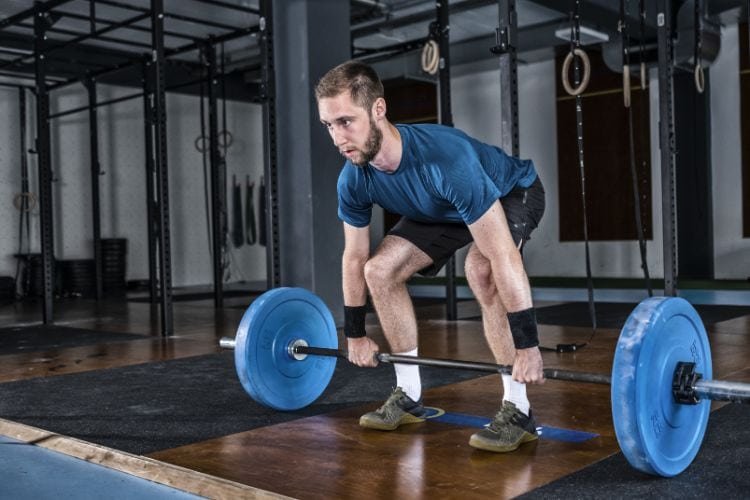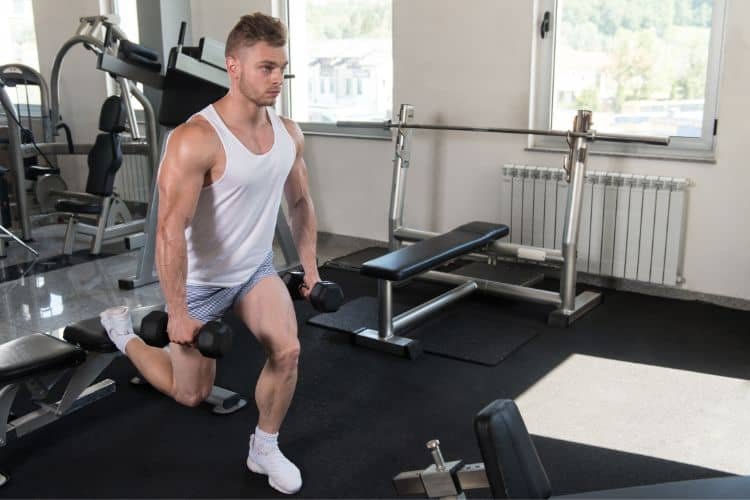
Barbell training is the foundation of most strength programs, and for good reason. It allows for progressive overload, improves coordination and stability, and works multiple muscle groups at once. Whether you’re aiming to build strength, pack on muscle, or lose fat, a structured barbell workouts program is your golden ticket. In this guide, we’ll break down everything you need to know, from benefits and essential movements to a weekly workout routine.
Why Choose a Barbell Workouts Program?
Barbell workouts are not just for powerlifters and bodybuilders—they’re for anyone who wants a strong, capable body. Here’s why:
Full-Body Engagement
Unlike machines that isolate muscles, barbell exercises recruit stabilizing muscles throughout the body. A barbell squat doesn’t just work your legs—it targets your core, back, and even upper body.
Progressive Overload Made Easy
Adding weight incrementally to the barbell allows you to progressively challenge your muscles, which is the most effective way to stimulate growth and strength gains.
Efficiency in Training
Barbell workouts hit multiple muscle groups in one movement. For instance, the deadlift targets your back, hamstrings, glutes, and core—all at once. This makes barbell training efficient, especially if you’re short on time.
Builds Real-World Strength
Lifting a barbell mimics natural human movement patterns. Whether you’re picking up groceries, moving furniture, or playing sports, the strength you build with barbells transfers to daily life.
Essential Barbell Workout Exercises Program to Include
Before diving into a full program, you should familiarize yourself with the foundational barbell lifts. These compound movements are staples in any strength routine.
1. Barbell Squat
The king of lower-body exercises, barbell squats build quads, hamstrings, glutes, and core stability. You can start with back squats and later include front squats for variety.
2. Barbell Deadlift
An essential pull exercise, deadlifts develop the posterior chain—hamstrings, glutes, lower back, and traps. Variations like Romanian deadlifts or sumo deadlifts offer additional stimulus.
3. Barbell Bench Press
A classic upper-body push movement, the bench press targets the chest, shoulders, and triceps. It’s great for building upper-body pressing power.
4. Barbell Overhead Press
This vertical press works the shoulders and triceps, with the added benefit of improving core stability and shoulder mobility.
5. Barbell Bent-Over Row
For back development and postural balance, bent-over rows target lats, traps, and rhomboids while engaging your core and lower body for support.
Structuring a Barbell Workouts Program
Creating an effective program involves proper planning around frequency, intensity, and recovery. The following structure provides a balanced weekly routine for both beginners and intermediate lifters.
Weekly Split Overview
Day 1: Lower Body Strength
2: Upper Body Strength
3: Rest or Active Recovery
4: Volume Training (Full Body)
5: Rest or Mobility Work
6: Conditioning + Barbell Complexes
7: Rest
Sample 4-Week Barbell Workout Program
Week 1-4 Focus: Building Strength Foundation
Each week progresses slightly in volume or intensity. Aim to increase weight every week by 2.5–5 lbs depending on your ability.
Day 1: Lower Body Strength
- Back Squat – 4 sets of 5 reps
- Romanian Deadlift – 3 sets of 8 reps
- Barbell Lunges – 3 sets of 10 reps each leg
- Standing Calf Raises (Barbell) – 3 sets of 15 reps
2: Upper Body Strength
- Barbell Bench Press – 4 sets of 5 reps
- Overhead Press – 3 sets of 6 reps
- Barbell Rows – 4 sets of 8 reps
- Close-Grip Bench Press – 3 sets of 10 reps
3: Rest or Active Recovery Barbell Program
Activities such as walking, light yoga, or foam rolling are encouraged.
4: Full-Body Volume Training
- Front Squats – 3 sets of 8 reps
- Deadlifts – 3 sets of 5 reps
- Push Press – 3 sets of 6 reps
- Barbell Curls – 3 sets of 10 reps
- Barbell Shrugs – 3 sets of 12 reps
6: Conditioning and Complexes
Barbell Complex (repeat 3-4 rounds):
- Deadlift x 6
- Bent-over Row x 6
- Hang Clean x 6
- Front Squat x 6
- Push Press x 6
- Back Squat x 6
- Good Morning x 6
Rest 90 seconds between rounds.
Progressive Overload Barbell Program: Key to Long-Term Gains
The principle of progressive overload means you must gradually increase the difficulty of your workouts. This can be done in several ways:
Increase Weight
Add 2.5–10 lbs to your lifts weekly or biweekly, depending on your progress and recovery.
Increase Reps or Sets
If weight cannot be increased due to fatigue, you can add an extra rep or an additional set instead.
Improve Technique
Perfecting form not only prevents injury but ensures optimal muscle recruitment. Controlled tempo and full range of motion go a long way.
Nutrition and Recovery for Barbell Training Program
Training hard with barbells requires proper recovery and nutritional support.
Focus on Protein and Carbs
To fuel muscle growth and recovery, aim for 1.2–2.0g of protein per kg of body weight and eat complex carbs like rice, oats, and vegetables. Don’t forget healthy fats from nuts, seeds, and fish.
Sleep and Recovery
Muscle grows during rest, not while lifting. Aim for 7–9 hours of sleep and take at least one full rest day per week.
Mobility and Warm-Up
Warm up before every workout with dynamic stretches and light barbell sets. Post-workout, use foam rolling and stretching to promote recovery.
Tips for Barbell Workout Program Success
Here are some best practices to keep you consistent and safe:
Prioritize Form Over Load
Never sacrifice form to lift heavier. Perfect technique ensures long-term results and reduces injury risk.
Log Your Workouts
Track sets, reps, weights, and how you feel each session. This helps identify plateaus and guides future programming.
Be Consistent
Stick with your program for at least 4–6 weeks before making major changes. Strength gains require time and consistency.
Common Mistakes to Avoid in Barbell Training Program
Even experienced lifters make avoidable mistakes. Here are a few to steer clear of:
Skipping the Warm-Up
Jumping straight into heavy lifts without warming up can strain muscles and joints. Always prepare your body for movement.
Ego Lifting
Lifting too heavy too soon is a recipe for injury. Progress smartly.
Neglecting Recovery
Training 6–7 days a week without adequate rest leads to overtraining, fatigue, and even regression.
Advanced Barbell Program Techniques to Consider (After 8-12 Weeks)
Once you’ve built a strong foundation, you can add advanced methods to continue progressing:
Barbell Supersets
Pair two barbell exercises back-to-back to increase intensity, such as squats and RDLs or bench press and rows.
Pyramid Sets
Start with higher reps and lighter weights, then increase weight and lower reps each set. This method hits multiple rep ranges in one workout.
Tempo Training
Slowing down the eccentric (lowering) phase of a lift increases time under tension and boosts muscle growth.
Is a Barbell Workouts Program Right for You?
A well-structured barbell workouts program is one of the most effective ways to build strength, muscle, and confidence. With consistent effort, proper form, progressive overload, and smart recovery, you’ll see gains in performance and aesthetics.
Whether you’re training at home with a barbell set or hitting the gym, the barbell is your ultimate training partner. Start with the basics, stay disciplined, and embrace the process. Over time, the results will speak for themselves—both in how you look and how you feel.












